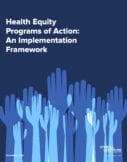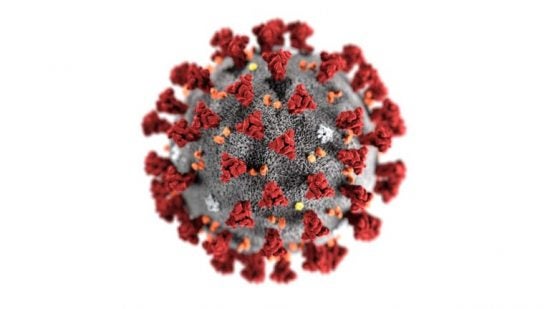 Today’s existing global health arrangements failed to stop COVID-19 from so far infecting more than 16 million people – and fast rising – and killing more than 600,000 – a toll rising by thousands every day, and with both infections and deaths likely drastically underreported. Of course, even before COVID-19, the global heath infrastructure was deeply inadequate. Less than half of the world’s people had access to essential health services at least count (2017). People in different countries have life expectancies that varies by decades – inequities replicated within countries.
Today’s existing global health arrangements failed to stop COVID-19 from so far infecting more than 16 million people – and fast rising – and killing more than 600,000 – a toll rising by thousands every day, and with both infections and deaths likely drastically underreported. Of course, even before COVID-19, the global heath infrastructure was deeply inadequate. Less than half of the world’s people had access to essential health services at least count (2017). People in different countries have life expectancies that varies by decades – inequities replicated within countries.
The world needs a dramatically improved global health architecture – and no doubt, from changes at WHO to possibly new or reshaped institutions, we will see post-COVID-19 reforms. What we need is a new global health architecture based in the right to health. My colleague Professor Larry Gostin and I have proposed three core aspects of that architecture: the Framework Convention on Global Health (FCGH), a Right to Health Capacity Fund, and heath equity programs of action.
Collectively, these span international and national law, policy, and financing. In my last entry, I explained how the Right to Health Capacity Fund would greatly contribute to global health security. The Chair of the FCGH Alliance, Martin Hevia, and I will soon post a piece on why the FCGH should be at the foundation of this reimagined, rights-based global health infrastructure, including because of the treaty’s wide-ranging contributions to global health security. I will repost or link to that piece in my next posting; stay tuned. Here, I offer ways that health equity program of action – a domestic approach, unlike the FCGH and Right to Health Capacity Fund – would contribute to global health security, including and critically by reducing the vulnerability of marginalized populations.
Health equity programs of action would be sets of action that all countries – and possibly states (provinces) and municipalities – could take to close health inequities, that is, the inequalities that we see within and across countries based on factors like where someone is born, the color of their skin, their ethnicity, their income, their gender identity and sexual orientation, and other characteristics that in a just world would not affect how healthy people are and how long they live. The programs of action would be systematic, covering each population and social and other (environmental, economic, political, cultural) determinant of health; systemic, addressing root causes of inequities, and; inclusive, with marginalized populations have a central role in establishing these programs of action and in their monitoring, evaluation, and other accountability mechanisms. They would follow a seven-principle framework, as described here.
COVID-19 offered a tragic demonstration of how societal injustices increase the vulnerability of the people who are subject to these injustices. In the United States, black and Latino Americans are about three times more likely to contract COVID-19 as whites, and about twice as likely to die. Disparities between people living in group homes for development disabilities and everyone else are even starker (data from New York). Migrant workers in crowded housing were overlooked in Singapore’s COVID-19 response – and outbreaks among migrant workers caused Singapore’s infections to soar. Indigenous peoples in Brazil have been five times as likely to become infected with COVID-19 as other Brazilians, and twice as likely even controlling for other factors. Across the world, informal workers, without a choice but to go to work – though work or nothing to eat is no real choice at all – cannot follow stay-at-home orders or follow physical distancing practices.

Health equity programs of action would get to the factors beneath these inequalities. Using the United States as an example, programs of action would doubtless encompass access to clean water for Native Americans, most notably the Navajo Nation, another hard hit population, so that they can follow handwashing recommendations.
Programs of action, spanning the determinants of health, would address educational and economic opportunities. With a fair chance at better-paid jobs, fewer blacks and Latinos would be employed in front-line, low-paid, but essential jobs like grocery store workers, sanitation workers, postal workers, and caregivers. They would be less dependent on public transportation – much less long, daily trips on buses and subways because they cannot afford housing nearer their workplaces.
Further, with redistribution of power and authority to those who now have the least, health equity programs of actions may well include changes in law and practice to facilitate unionization and increase the number of members of marginalized populations who hold management positions in businesses. Programs of action might include enhanced enforcement of workplace safety laws, and policies that ensure that workers have the greatest say over worker protections, so that companies – including those employing large numbers of minorities – could not fail to provide their employees personal protective equipment, or without adequate paid sick and family leave.
Health equity programs of action would address inequalities in housing. Along with higher incomes, other measures (like subsidies and more investments in creating and incentivizing new housing) could keep members of communities of color from living in cramped housing where they cannot keep physically apart. And programs of action would address disparities in health care and underlying conditions of ill health and their causes, like lack of affordable nutritious food or clean environments, which may contribute to certain populations having worse outcomes from infectious diseases, as is the case with COVID-19. And heath resources would be distributed equitably, so no longer would hospitals serving poorer communities of color have far fewer resources, and far higher mortality rates – as for COVID-19 in New York City – than hospitals in wealthy neighborhoods.
These types of measures would not only protect marginalized populations, leading to an equitably shared burden of disease. They would reduce the level of infection and death across the entire population. Greater workplace safety, clean water, less use of public transport during outbreaks of highly contagious diseases, better housing, fewer people with underlying health conditions – these would all prevent, not simply redistribute, infections, and reduce the number of people with life-threatening complications. And with fewer infections, there will be less spread within the community. And less spread within a community, replicated throughout communities across the country, means fewer infections nationally. And the fewer cases within a country, the fewer opportunities for cross-border transmission and international spread. Health equity programs of action truly are a necessary instrument of both the right to health and global health security.



